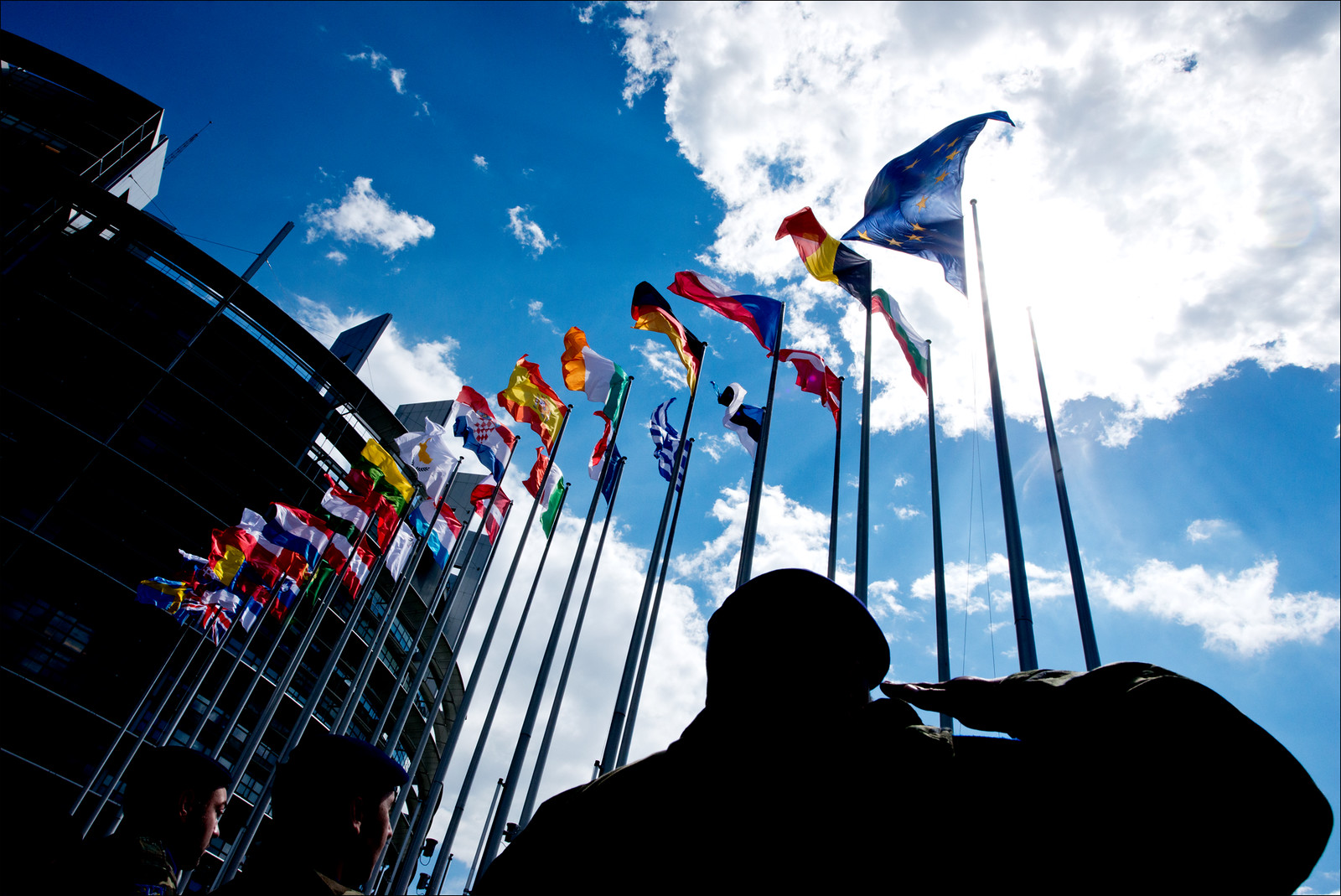
- “If European member states are serious about building a European Defence Union, a Treaty reform is inescapable.”
The Russian aggression against Ukraine was a turning point for European security and led the European Union and its member states to take important steps in the field of defence. The EU decided to use common funding to equip the Ukrainian government with arms and ammunition through the European Peace Facility for a total of 3.6 billion euro, Germany allocated additional 100 billion euro to its defence budget, Denmark joined the Common Security and Defence Policy (CSDP), Finland entered NATO and Sweden is willing to follow it soon. Time seems to be ripe for bold decisions on European defence, which would also need to consider a reform of existing provisions.
The aim of a credible Defence Union
To define which Treaty changes are necessary, we need to clarify what is the objective that the Union and the member states would want to achieve first. Based on the indications from the Conference on the Future of Europe, there is a need for Europe “to be more independent and better able to provide for itself in vital areas”, including security and defence. In recent years, the aim to build a European Defence Union has been spelt out by both the European Parliament and the European Commission.
But what does it mean concretely? In this regard, the Franco-British St. Malo Declaration (1998), which can be considered as the preliminary step towards the operationalisation of the CSDP following the failure of the EU to respond effectively to the Balkan wars, is still valid. In fact, it reads that “the EU must have the capacity for autonomous action, backed up by credible military forces, the means to decide to use them, and a readiness to do so, in order to respond to international crises”.
Twenty-five years later, war has come back on European soil. It is thus crucial to assess where we stand and what we miss on the way to meeting this goal in order to plan the necessary actions for the future.
Provisions, constraints – and possible reforms
The Treaty on European Union (arts. 24 and 42 TEU) correctly considers the common security and defence policy, including the gradual framing of a common defence, as an integral part of the common foreign and security policy. A future European Defence Union cannot indeed be decoupled from a functioning Common Foreign and Security Policy. This requires, at a minimum, revising existing provisions by expanding the powers of the High Representative/Vice President of the European Commission and incentivising forms of differentiated coordination among member states, with a view to allowing the EU to implement the political initiative of common institutions and those countries that are willing and able to act on key foreign policy matters.
Effective and timely actions have been impeded so far also by the provisions of the Treaty (arts. 31 and 42 TEU) that prescribe unanimity as the decision-making rule in the field of foreign, security and defence policy. Unfortunately, unanimity has very often led to late or sub-optimal responses to crises and conflicts, from Northern Africa to the Balkans and beyond.
Therefore, there is growing pressure from the European Parliament and the European Commission, but also by key member states, to expand the application of the qualified majority voting (QMV) to key areas of foreign and security policy, for example sanctions and civilian missions. It is maybe overambitious to propose the adoption of QMV also for decisions having military or defence implications, given the interests at stake at the national level. However, it might be worth exploring forms of enhanced QMV or the possibility for one member state to abstain without impeding the adoption of a decision.
Democratic accountability and a common budget
Moreover, if we want to build a European Defence Union, we shall ensure the democratic accountability of decisions in the military and defence domain. This cannot be done solely through the parliamentary oversight over governments at the national level, but requires the reinforcement of the information and consultation powers of the European Parliament as they are provided for in art. 36 TEU. The most effective power of the European Parliament, namely the budgetary power, should also be expanded to military and defence matters.
This means including in the common budget the operating expenditure of military missions, which is currently forbidden by the Treaty (art. 41 TEU). Such a reform would also enhance a more fair and balanced burden sharing among member states. Since the CSDP became operational in the early 2000s, we have learnt that the impossibility of financing military and defence operations through the common budget implies that the more active member states, those that participate in EU missions with men and assets, are also those that pay more, in accordance with the principle “costs lie where they fall”. Moreover, art. 41 TEU de facto is an obstacle to civilian-military cooperation, since civilian and military missions are financed according to different procedures.
The steps toward a new European defence architecture
The final aim is that the EU should be able to respond in a timely and effective way to conflicts and crises, including in the European continent. Pending the creation of a so-called European army, whatever it may look like, this means rationalising the European defence architecture and rely on a clear chain of command to mobilise national European forces.
What we need is a political authority – for example a Council of European Defence Ministers, a fully-fledged headquarters in Brussels for military operations – not only for non-executive missions, and national military contingents that are on call to be deployed by EU authorities. In this framework, the EU Military Committee is clearly fully qualified to function as if it was a national Chief of Defence. It could take crucial strategic decisions, while availing itself of the support of the EU Military Staff. And the European Defence Agency should be turned into a European armaments agency.
A more efficient procurement
Rationalising the overall architecture would allow the EU to overcome its current ambiguities and inefficiencies regarding European support to R&D and procurement in the field of defence. In fact, defence investments by the European Commission (DG DEFIS) are currently made in a purely market logic, in accordance with its role of unlocking the full potential of the EU single market.
But the defence market is not, and will never be, a free market: defence R&D and procurement decisions are done taking into account political and strategic considerations, which the current institutional architecture struggles to do. An overall reform which establishes a full European defence political and military chain of command, with a correctly balanced role for the European Commission, for member states and for the European Parliament, would finally enable the EU to invest strategically in defence.
Looking ahead
Changing the rules also through an amendment of the Treaties, especially in a sensitive field such as defence, is no easy matter. Last year, the European Parliament adopted a resolution calling on the European Council to start the process of revising the EU Treaties, which would also include giving more powers to the Union in defence matters. The European Parliament’s Committee on Constitutional Affairs has since continued to work on the possible changes. While some capitals like Paris and Berlin would indeed favour a revision of the current provisions, a group of thirteen member states have clearly declared their opposition to Treaty change.
A Treaty reform, however, is inescapable if European member states are serious about building a European Defence Union and equipping the EU with the necessary military might to protect its citizens, provide its neighbourhood with adequate security guarantees and exercise a credible deterrence against its potential adversaries. Russia’s war on Ukraine has made the debate more pressing. During the past months, the EU has realised how difficult it is to act according to the current rules, for example if a country like Hungary decides to block decisions on sanctions even if all other countries have agreed on them.
In the wake of next year’s European elections, all pro-European political forces should place the necessary reform of the Treaties at the core of their electoral campaign, with a view to making the most of the Conference on the Future of Europe and turning the next legislature into a real constituent phase for the EU.
Nicoletta Pirozzi is Head of the Programme “EU, politics and institutions” and Institutional Relations Manager at the Istituto Affari Internazionali (IAI) in Rome. |
This article was first published as an IAI commentary on the website of the Istituto Affari Internazionali.

Keine Kommentare:
Kommentar veröffentlichen
Kommentare sind hier herzlich willkommen und werden nach der Sichtung freigeschaltet. Auch wenn anonyme Kommentare technisch möglich sind, ist es für eine offene Diskussion hilfreich, wenn Sie Ihre Beiträge mit Ihrem Namen kennzeichnen. Um einen interessanten Gedankenaustausch zu ermöglichen, sollten sich Kommentare außerdem unmittelbar auf den Artikel beziehen und möglichst auf dessen Argumentation eingehen. Bitte haben Sie Verständnis, dass Meinungsäußerungen ohne einen klaren inhaltlichen Bezug zum Artikel hier in der Regel nicht veröffentlicht werden.